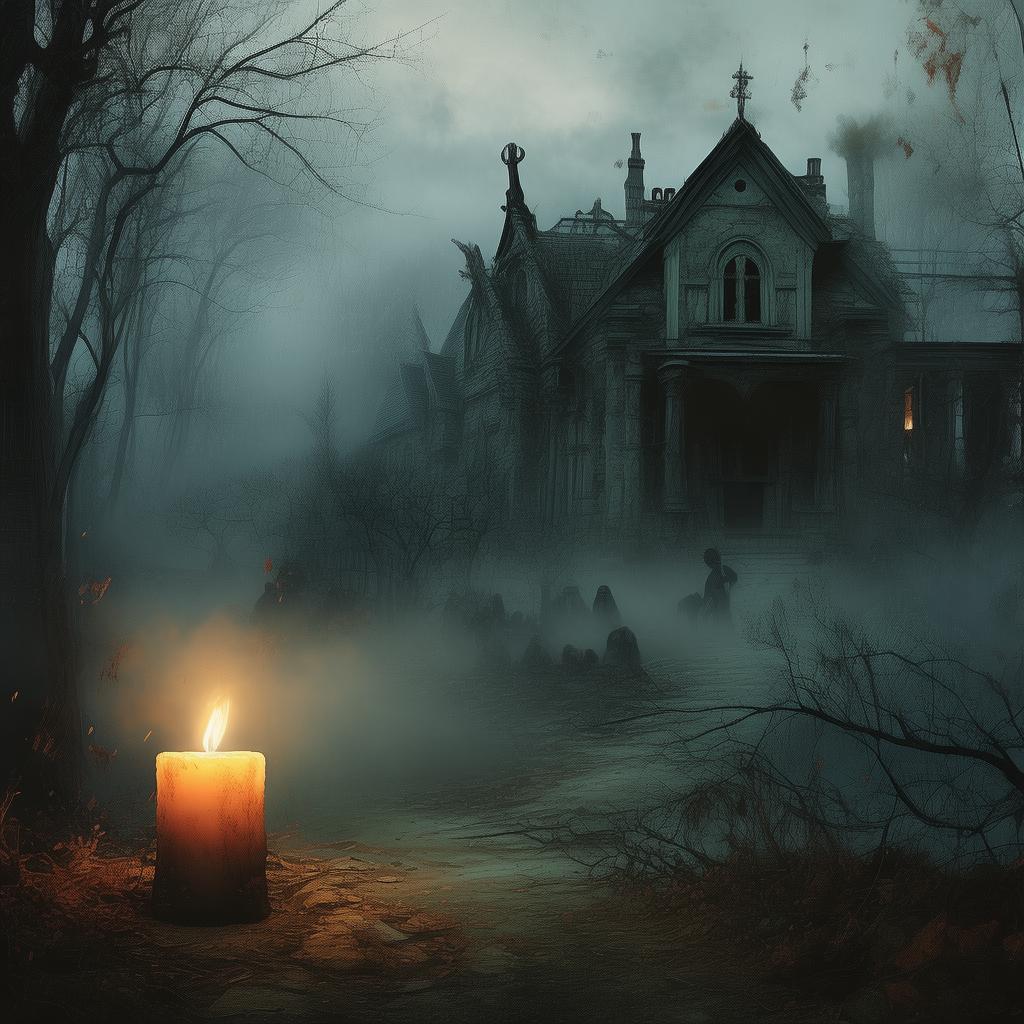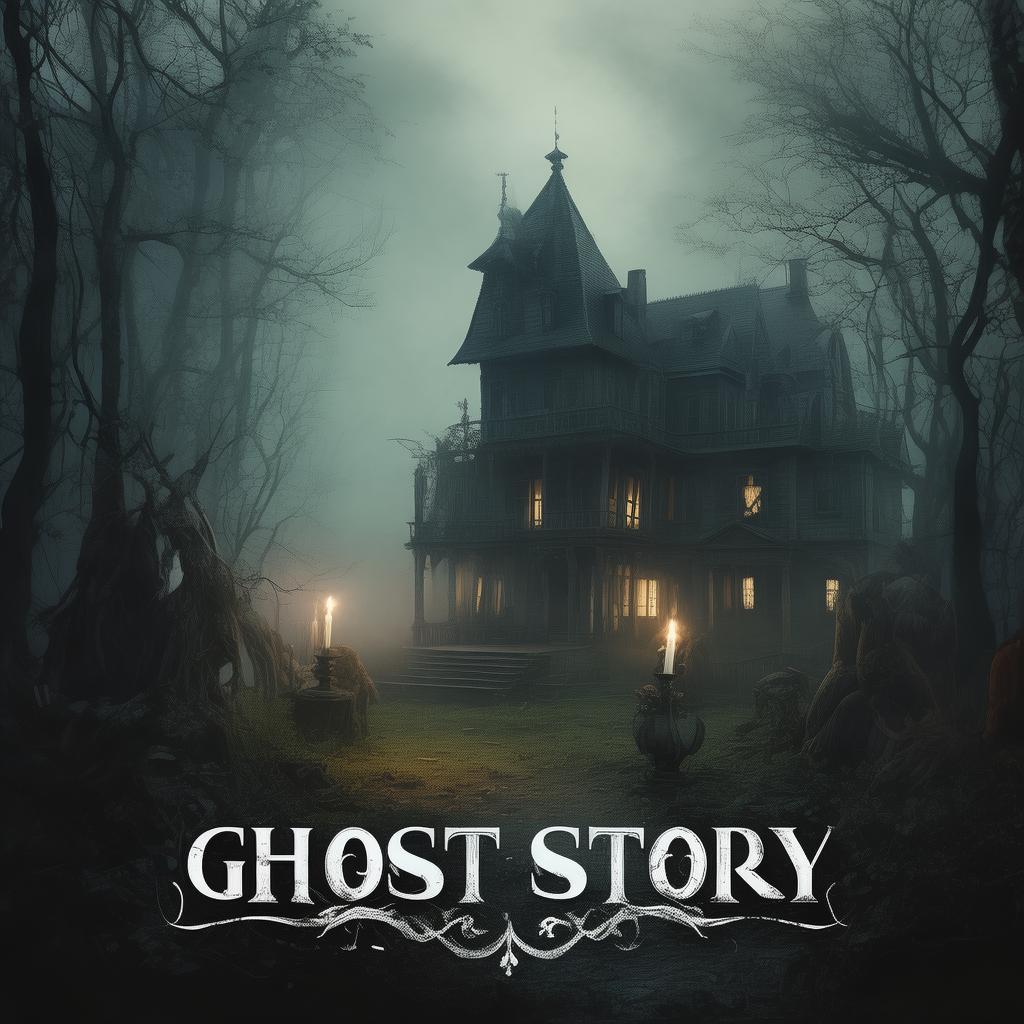Whispers in the Attic
The old Victorian house on Maple Street had stood for a century, its creaky floorboards and drafty windows whispering tales of bygone eras. It was in this very attic that the whispers began, a chilling sound that echoed through the eaves and crevices of the aged structure. The current residents, the Johnsons, had moved in with their young daughter, Emily, not knowing the dark history that lay hidden in the attic's shadows.
Emily was an only child, prone to daydreaming and fascinated by the attic's peculiar allure. She spent her afternoons exploring the cobweb-laden space, her fingers tracing the faded wallpaper that seemed to tell stories of its own. The whispers had started subtly, a faint rustling that seemed to come from nowhere. But as the days passed, the whispers grew louder, insistent, and they seemed to follow Emily wherever she went.
One evening, as the sun dipped below the horizon, casting long shadows in the attic, Emily heard a voice. It was a woman's voice, soft and melodic, but with an undercurrent of sorrow. "I am trapped here," the voice said, "and I need your help."

Startled, Emily clutched the edge of the old desk, her heart pounding. She searched her mind for any clue as to who could be trapped in her attic, but the only thing she knew was that the house had once belonged to a woman named Eliza, who had mysteriously vanished in the 1920s.
Determined to uncover the truth, Emily began her investigation. She sifted through old letters, photographs, and journals, piecing together the life of Eliza. She discovered that Eliza had been a renowned artist, whose paintings had brought her fame and fortune. But her sudden disappearance left the community in shock, with rumors swirling of a tragic love affair gone wrong.
As Emily delved deeper, she found a hidden compartment in an old wooden trunk, containing a series of paintings. Each painting depicted a different phase of Eliza's life, but the final one was the most disturbing. It showed Eliza, bound and gagged, with a menacing figure looming over her. The caption beneath the painting read, "The truth I could not bear to tell."
Emily's parents, unaware of the extent of their daughter's investigation, noticed her preoccupation with the attic and Eliza's story. Concerned, they hired a historian to look into the case. The historian, Dr. Harold Whitmore, was a seasoned expert in local history and the house's dark past.
Dr. Whitmore's research revealed that Eliza had indeed been involved in a love triangle, with her lover, Lord Jameson, and his wife, Lady Margaret. It seemed that Eliza had discovered the affair, and in a fit of jealousy, Lord Jameson had locked her away in the attic. The whispers, Dr. Whitmore explained, were Eliza's desperate calls for help, which had been drowned out by the hustle and bustle of the household below.
Emily, driven by a newfound sense of purpose, decided to free Eliza from her eternal imprisonment. She worked tirelessly, using her artistic talent to replicate the paintings and create a series of clues that would lead to the attic's hidden door. The night of the full moon, when the attic's air seemed charged with a supernatural energy, Emily and Dr. Whitmore made their final attempt.
As they reached the hidden door, the whispers grew louder, almost a symphony of sorrow. With trembling hands, Emily pushed the door open, revealing a small, dimly lit room. There, in a corner, was a small, bound figure. It was Eliza, her eyes now wide with recognition, her lips moving as if to speak.
Before Emily could react, the door slammed shut behind them. The whispers grew louder, more insistent, and Emily felt a chill run down her spine. She looked at Dr. Whitmore, whose face was as pale as the moonlight filtering through the window. "It's too late," he whispered. "We shouldn't have come here."
Suddenly, the whispers changed. They became a chorus of voices, thanking Emily for her courage. In an instant, the room was filled with light, and Eliza, now unbound and free, stood before them. Her face was radiant, her eyes filled with gratitude.
"Thank you," she said, her voice clear and strong. "Thank you for setting me free."
As Eliza stepped forward, she seemed to fade away, leaving only a sense of peace in her wake. Emily and Dr. Whitmore watched, their hearts pounding in their chests, as the attic returned to its quiet, stillness.
In the days that followed, the whispers stopped. The Johnsons, who had been on the brink of moving out, decided to stay. They now understood the house's true history and were grateful for the peace that had been restored.
Emily, however, knew that her adventure was far from over. The attic had revealed secrets that would change her life forever, and she knew that there were still many stories left untold. But for now, she had freed Eliza, and the whispers in the attic had been silenced.
✨ Original Statement ✨
All articles published on this website (including but not limited to text, images, videos, and other content) are original or authorized for reposting and are protected by relevant laws. Without the explicit written permission of this website, no individual or organization may copy, modify, repost, or use the content for commercial purposes.
If you need to quote or cooperate, please contact this site for authorization. We reserve the right to pursue legal responsibility for any unauthorized use.
Hereby declared.









